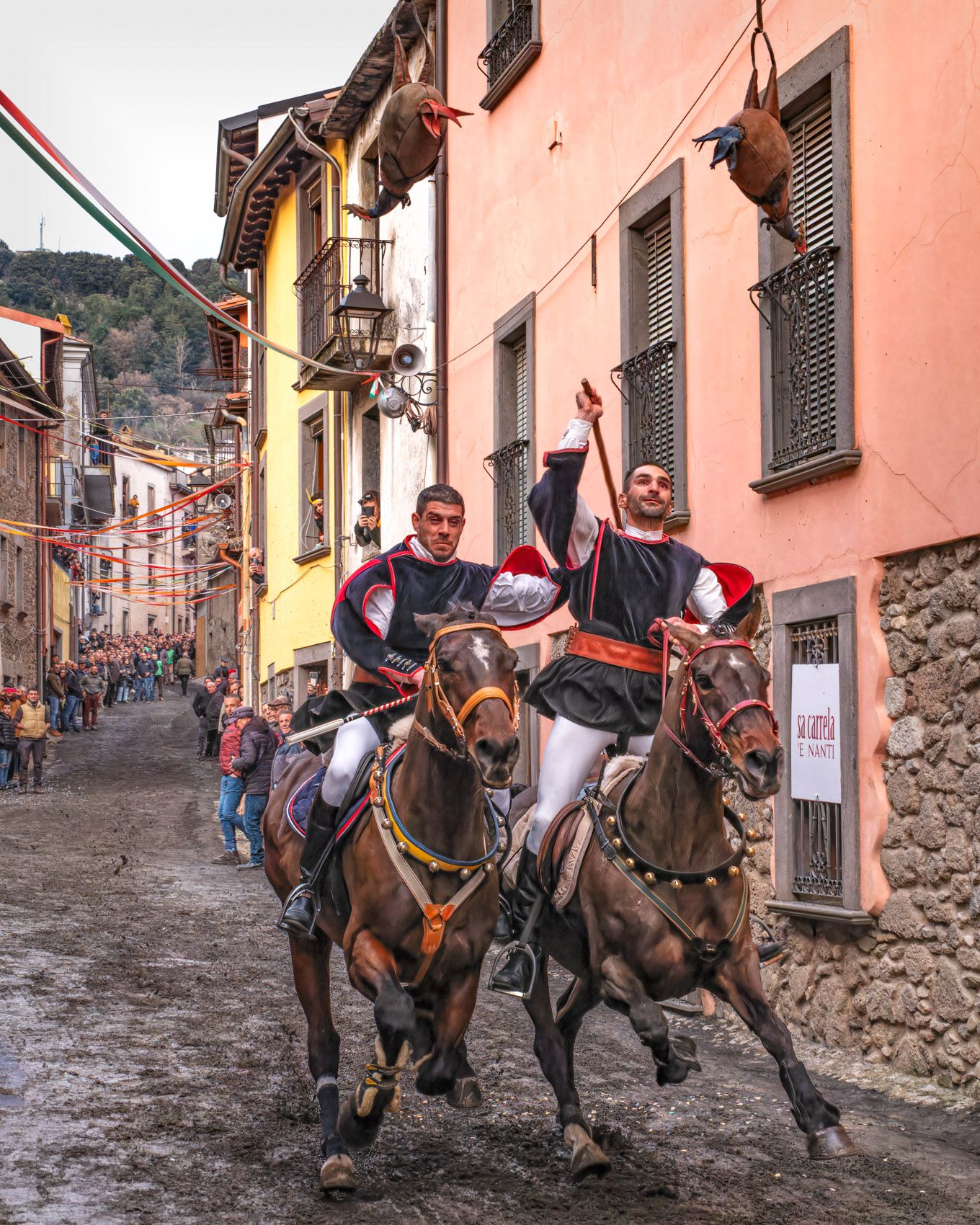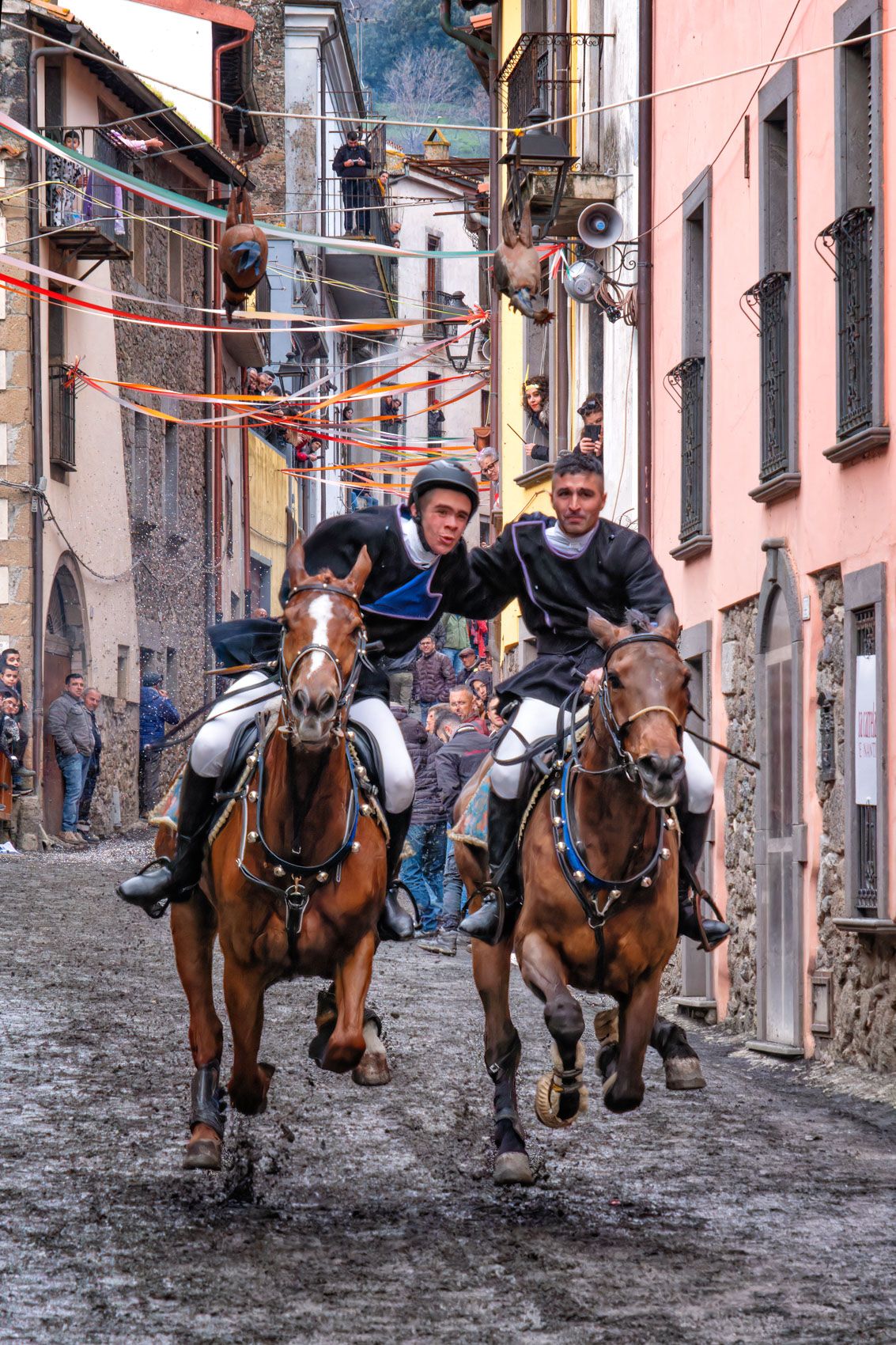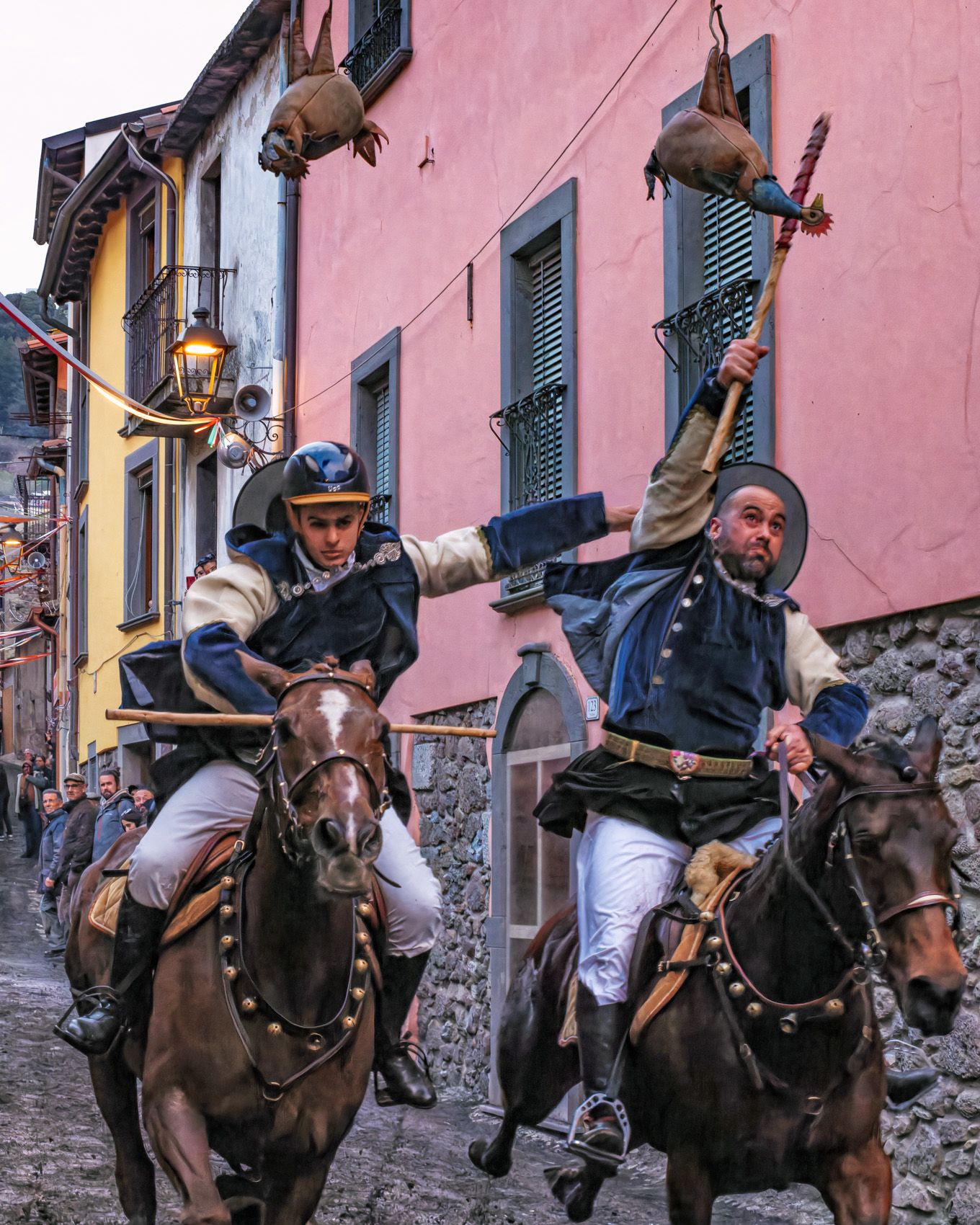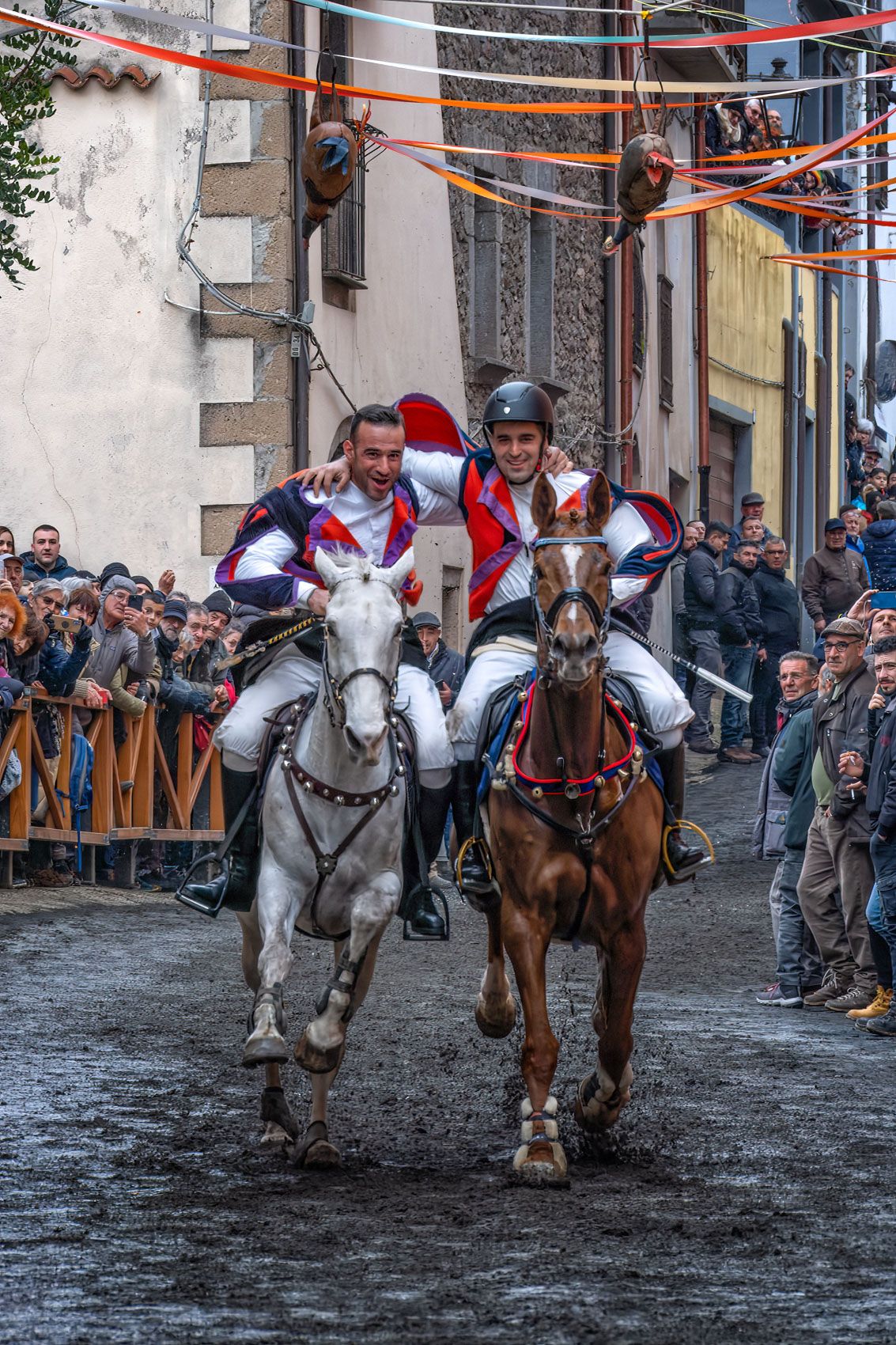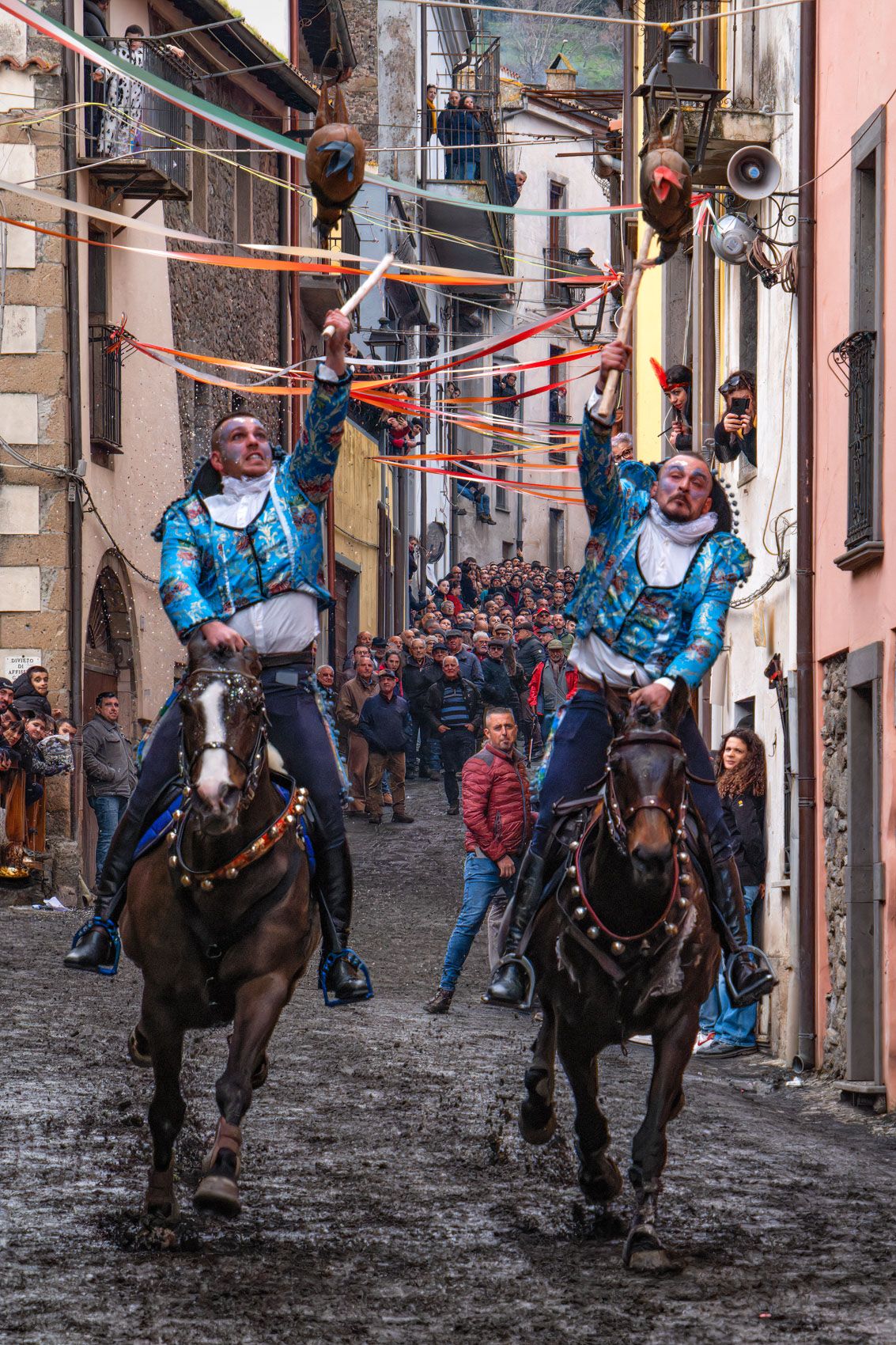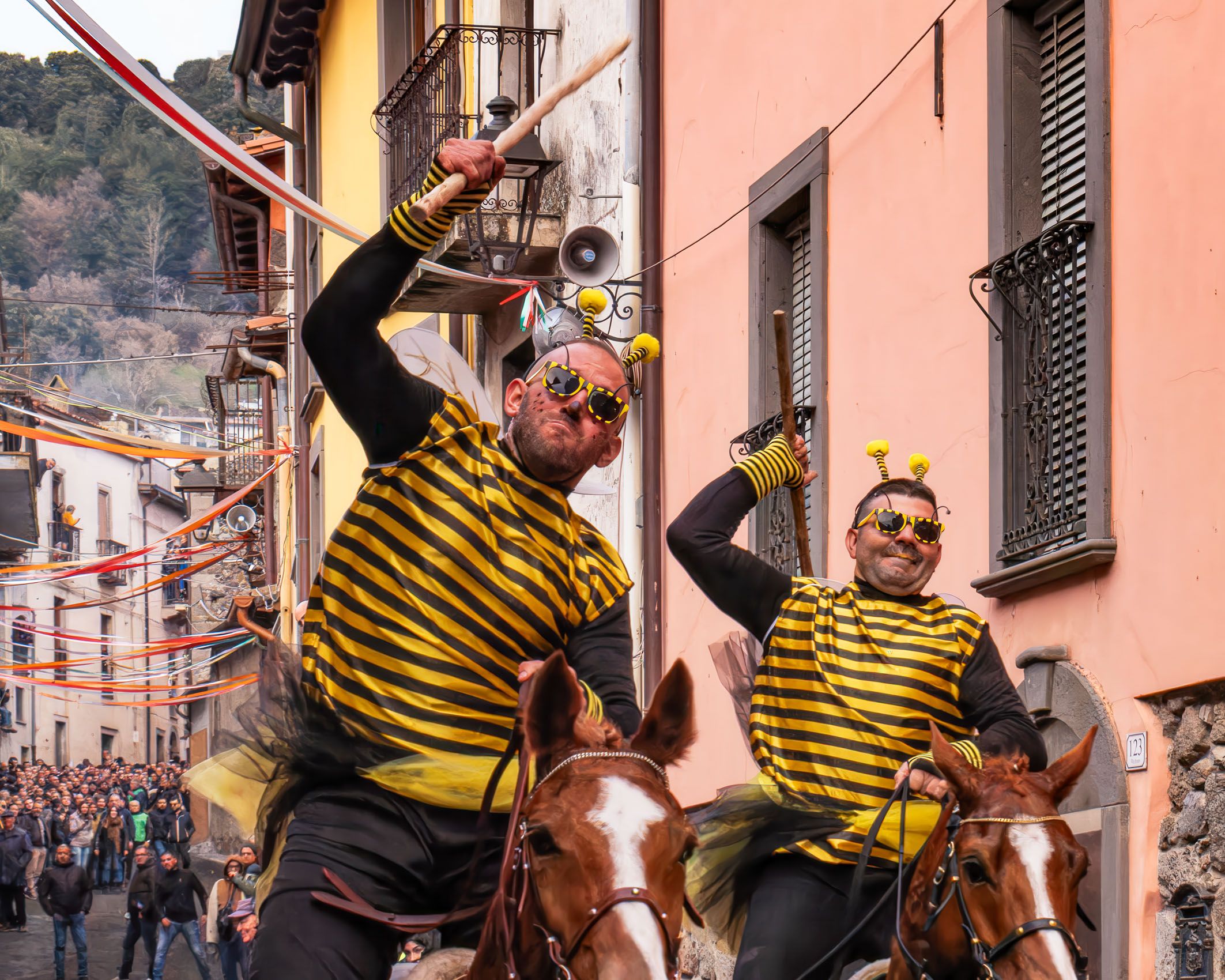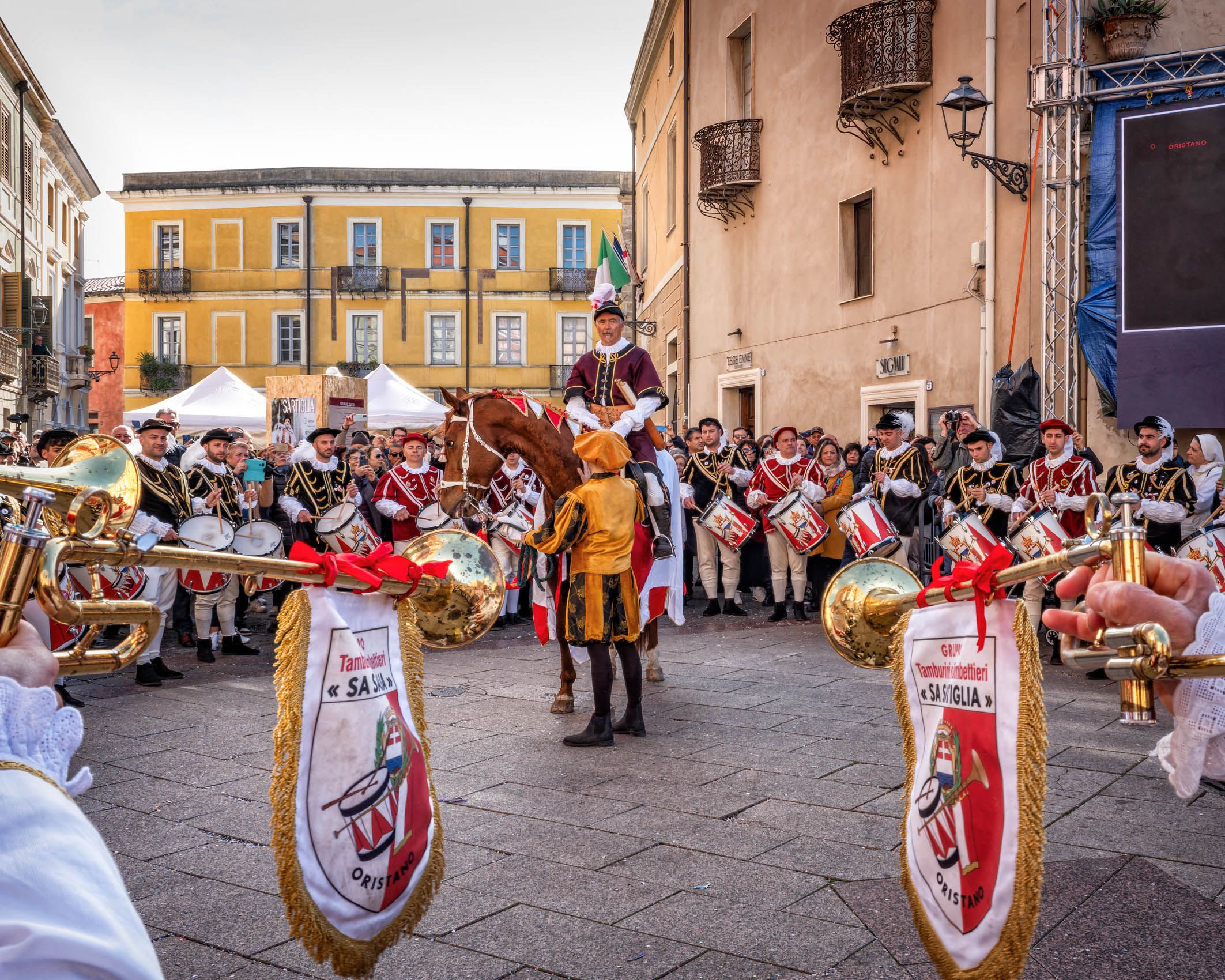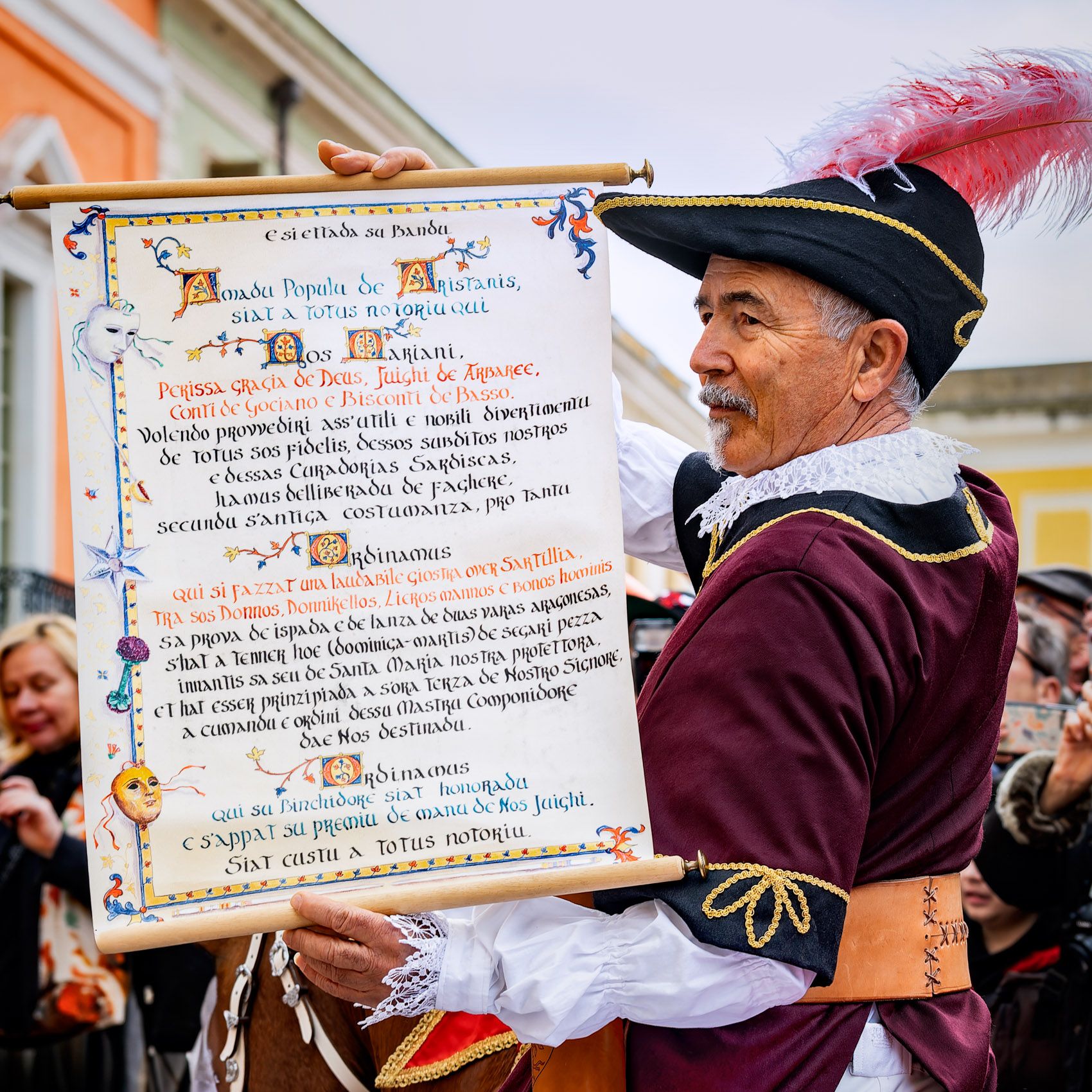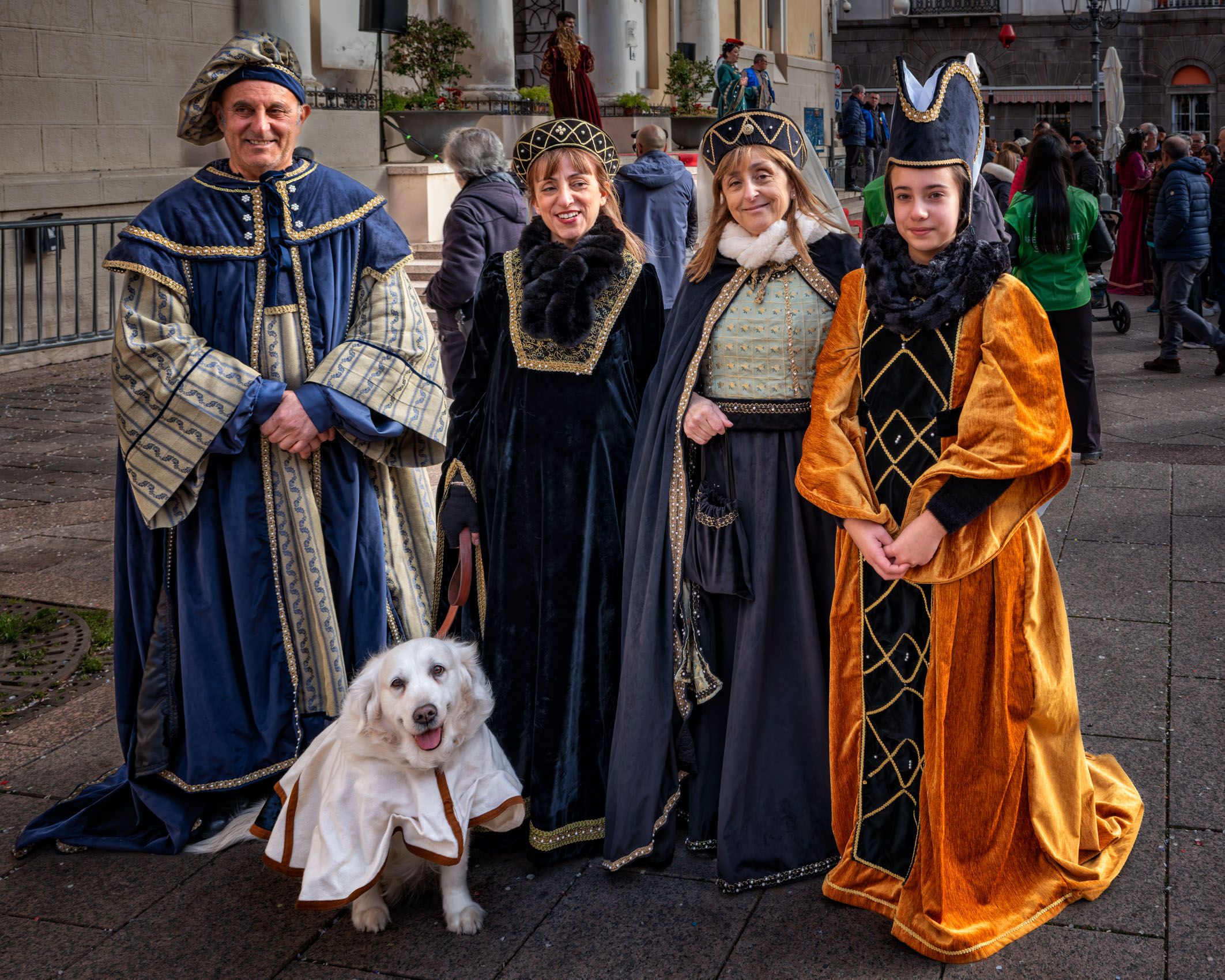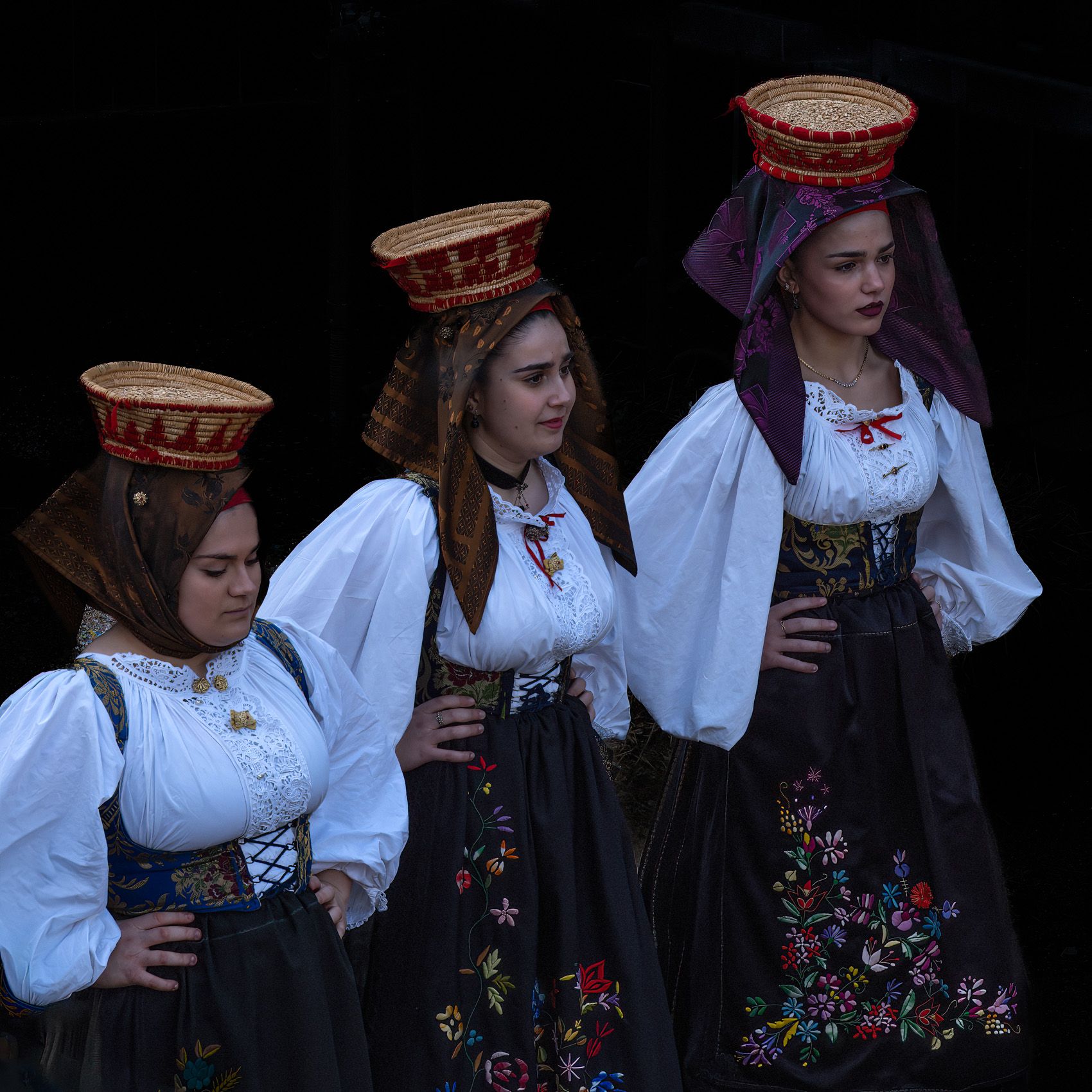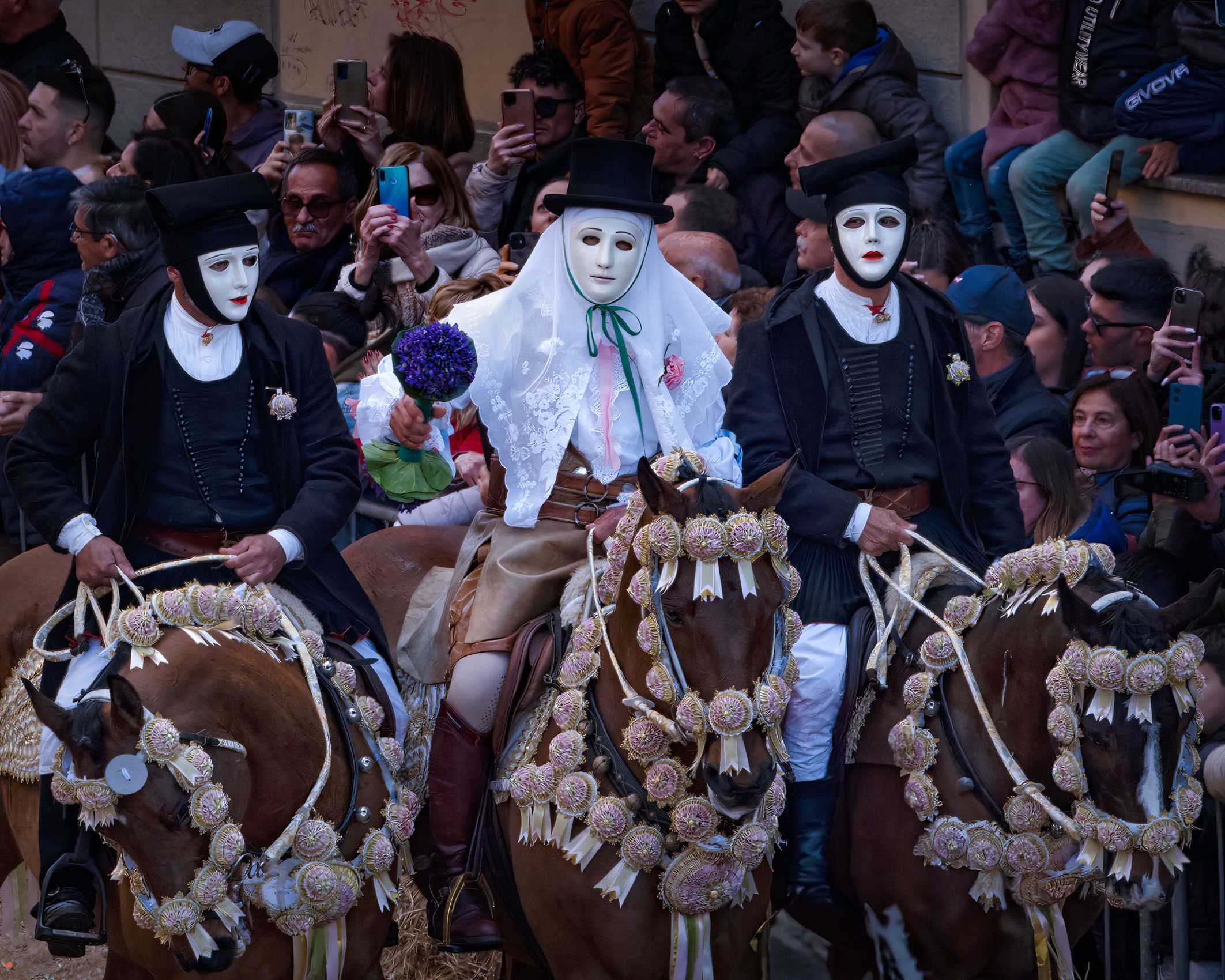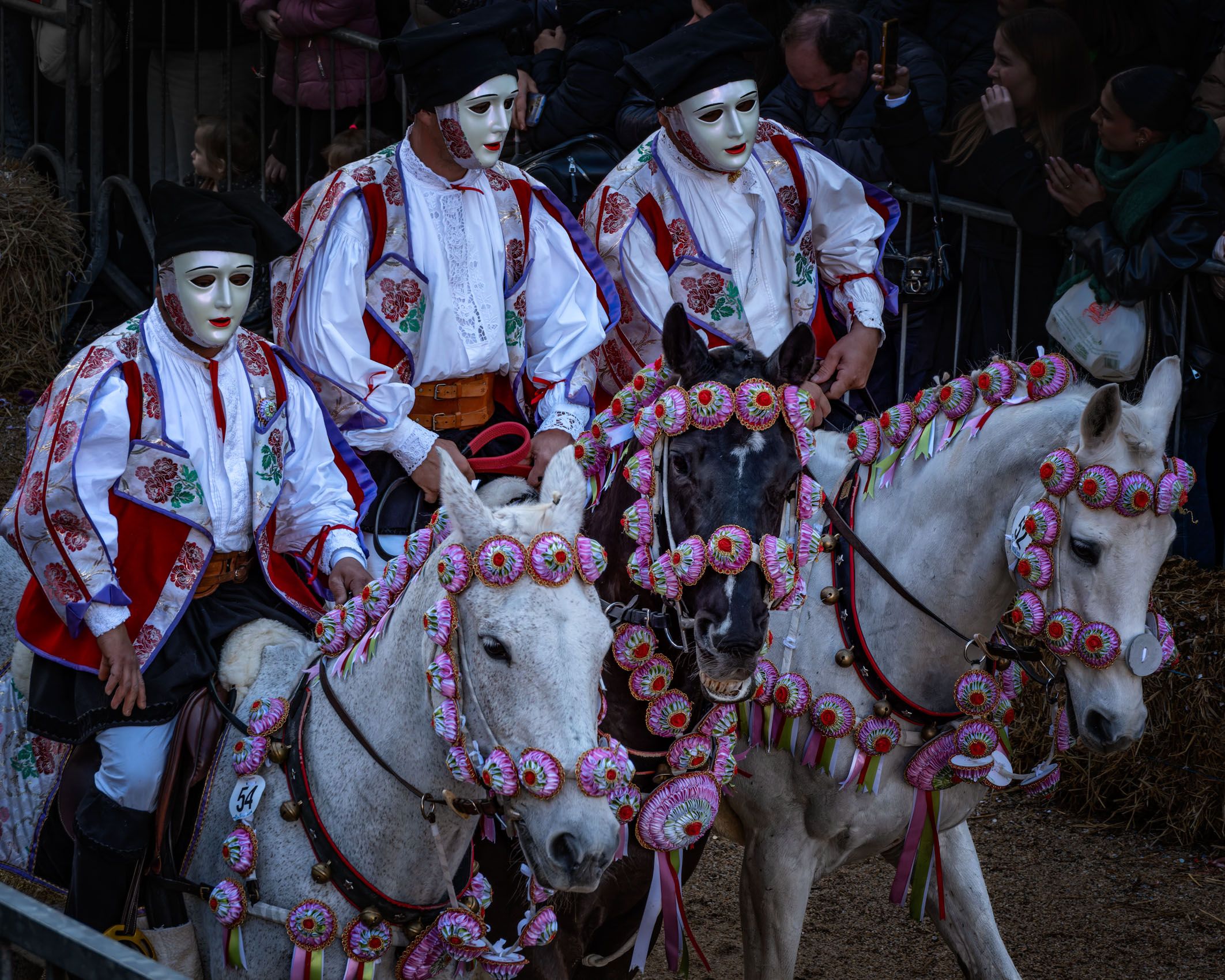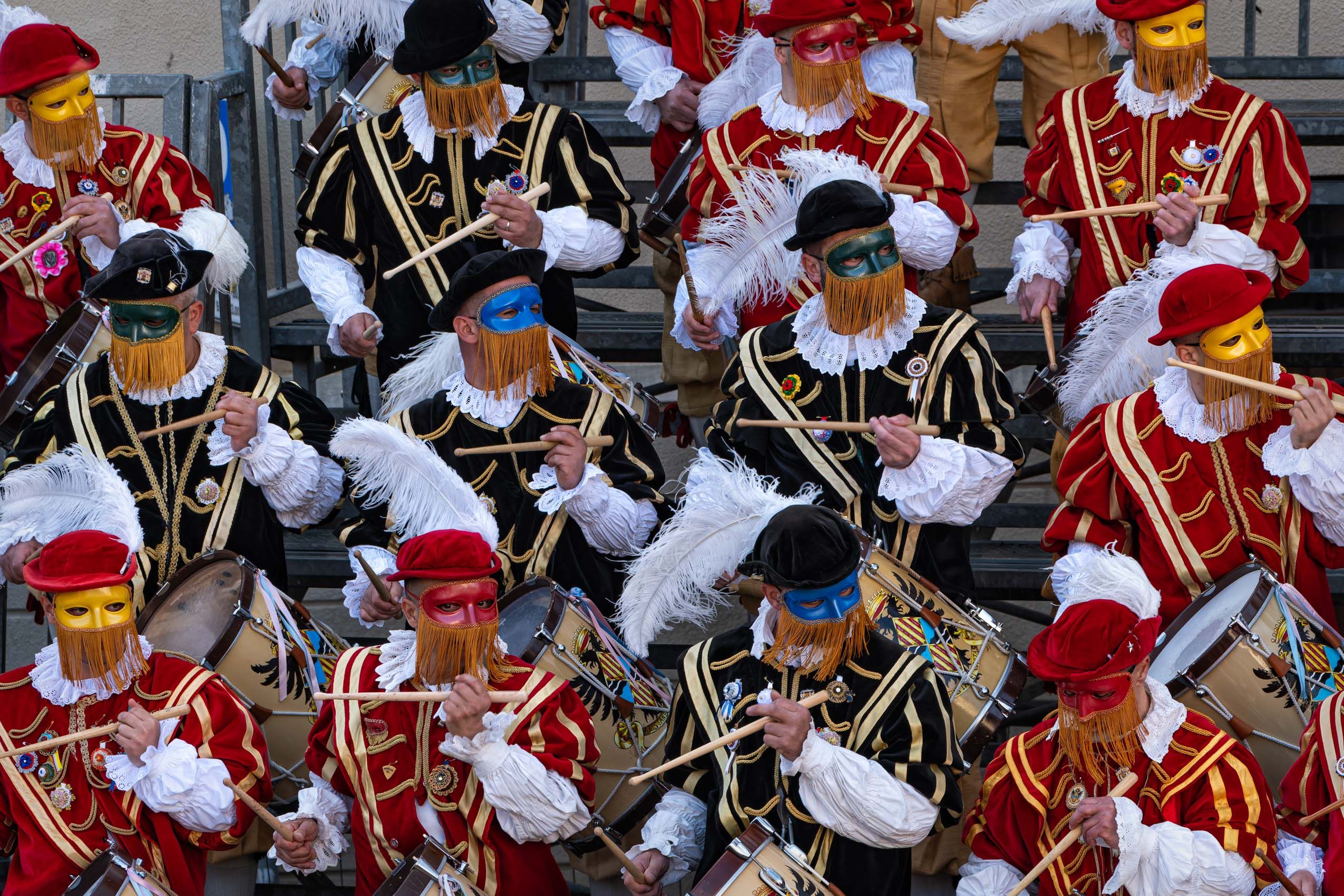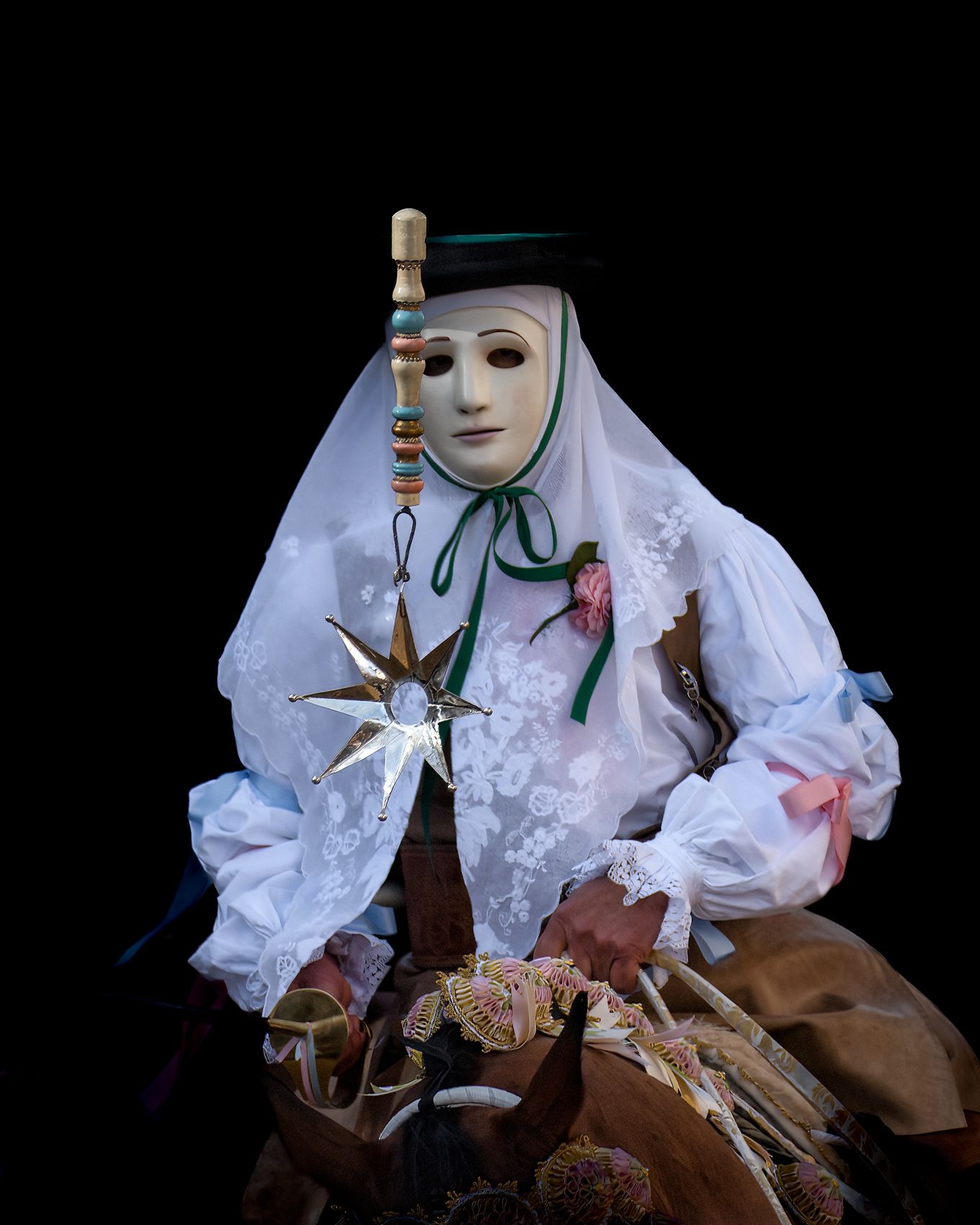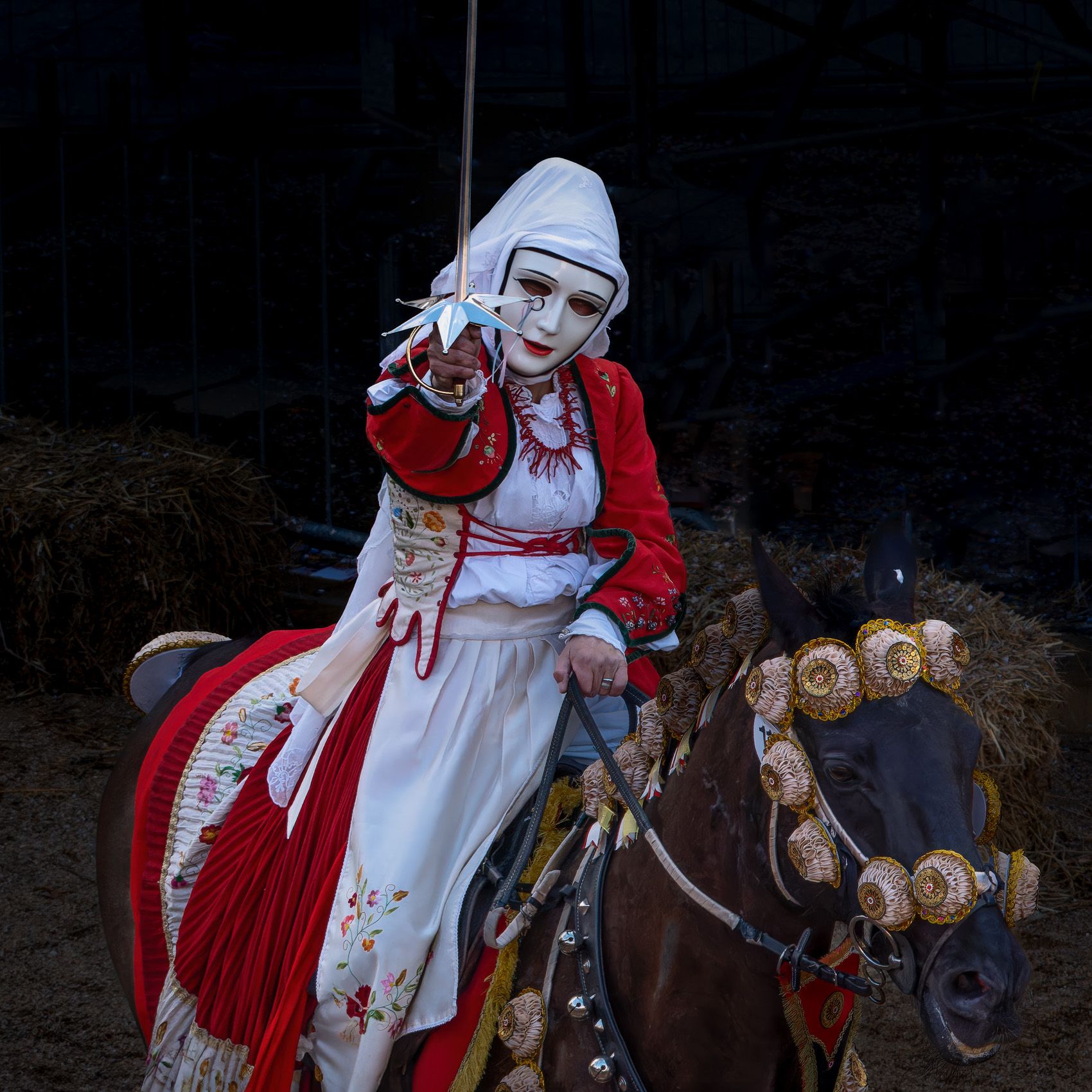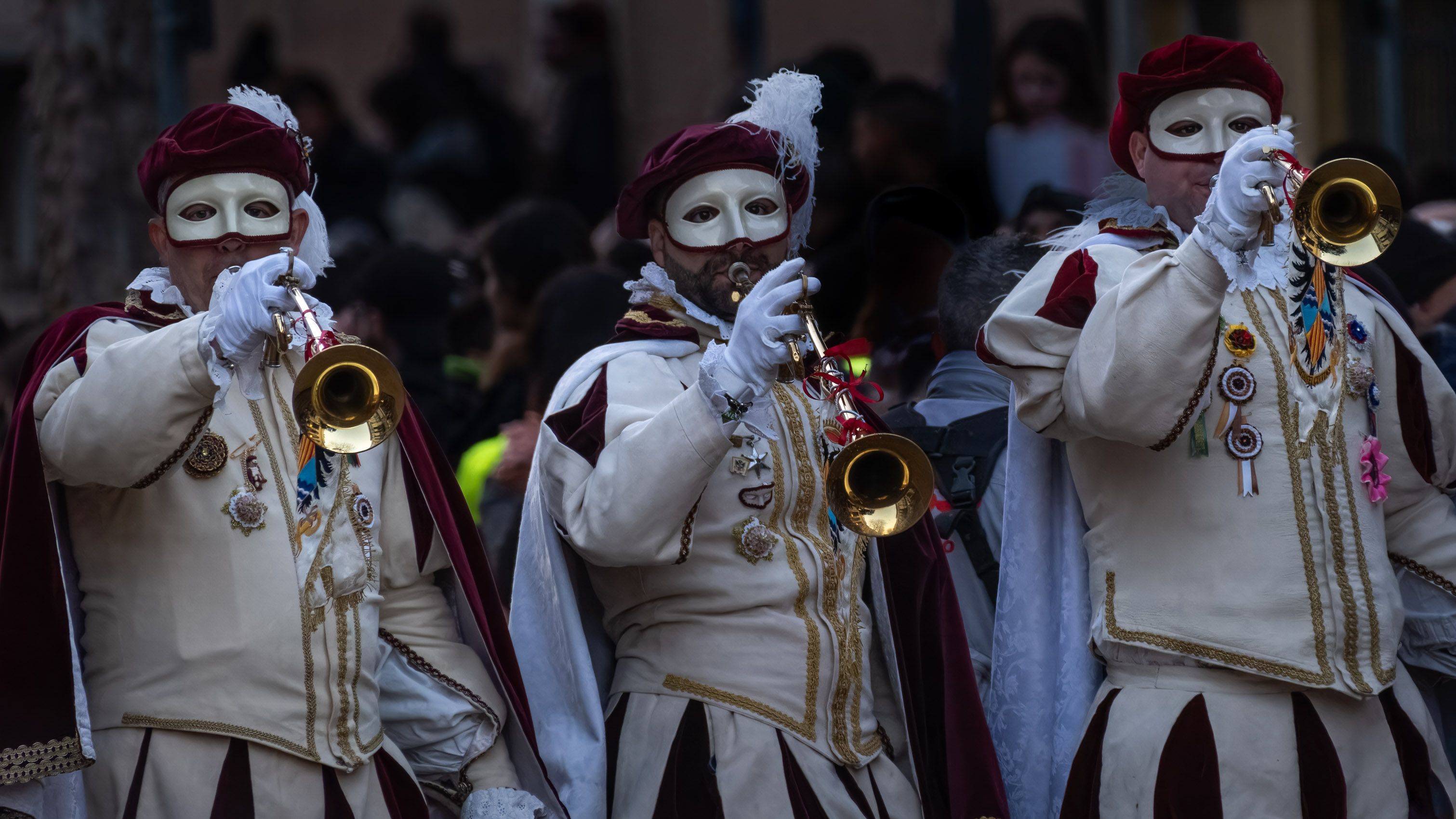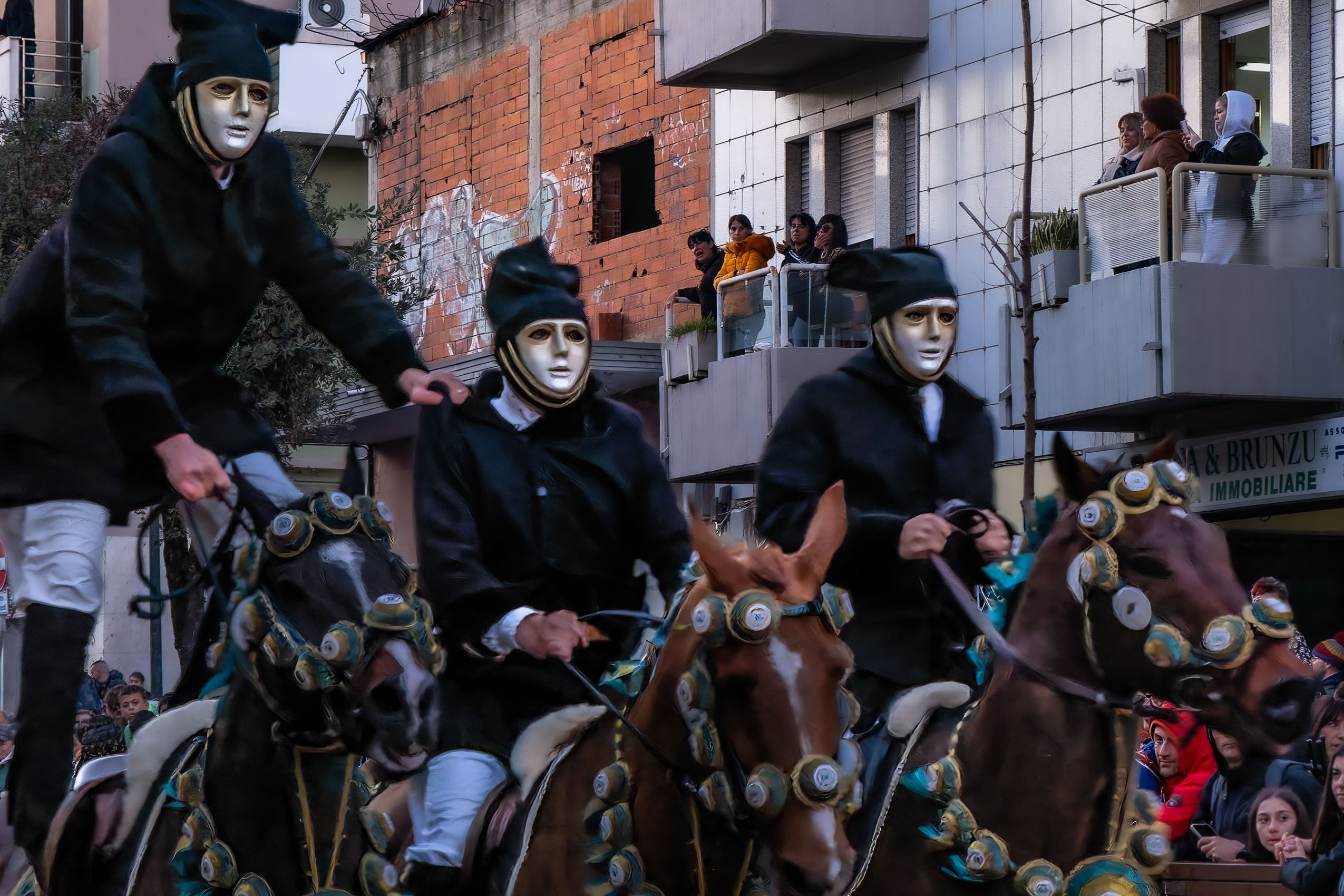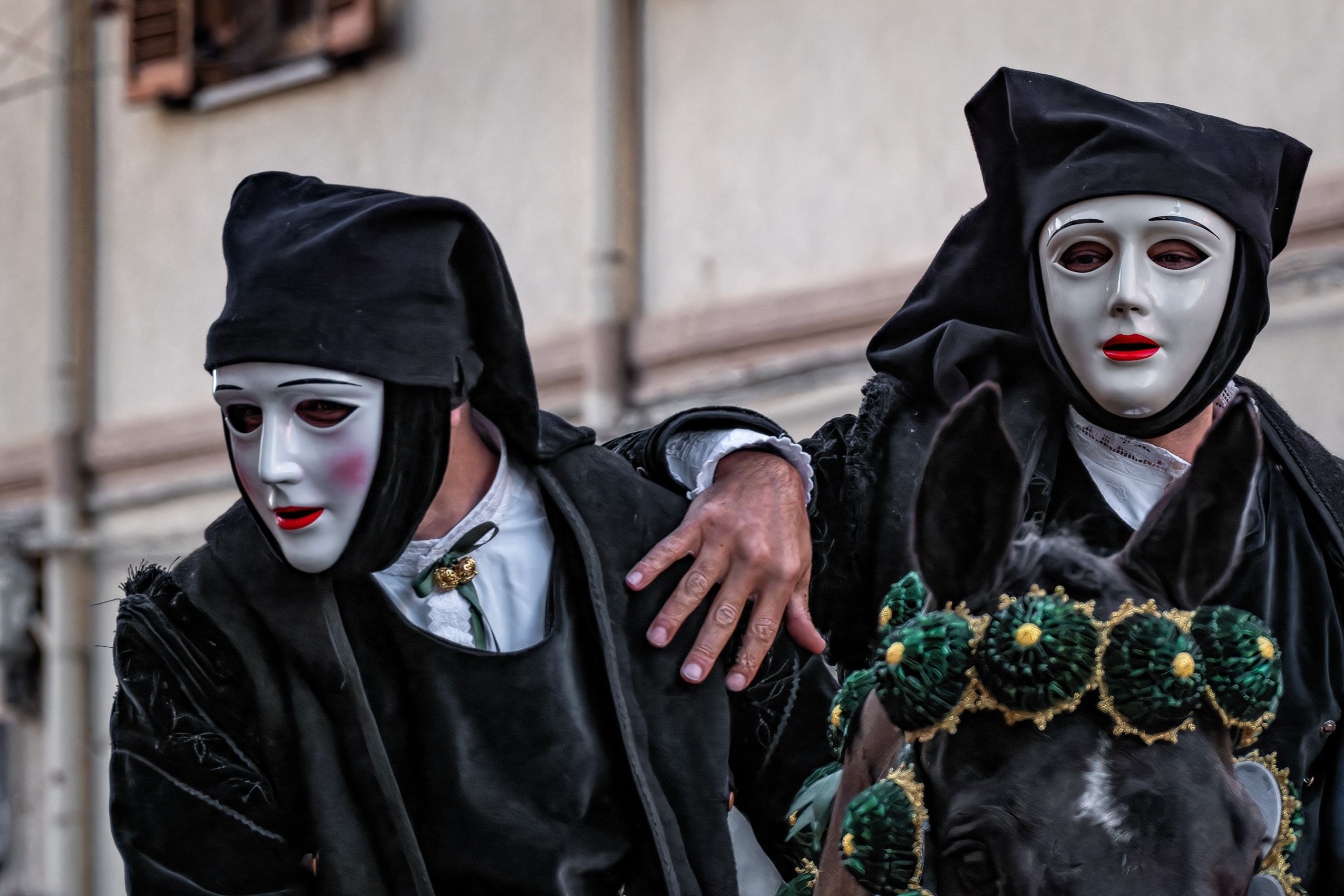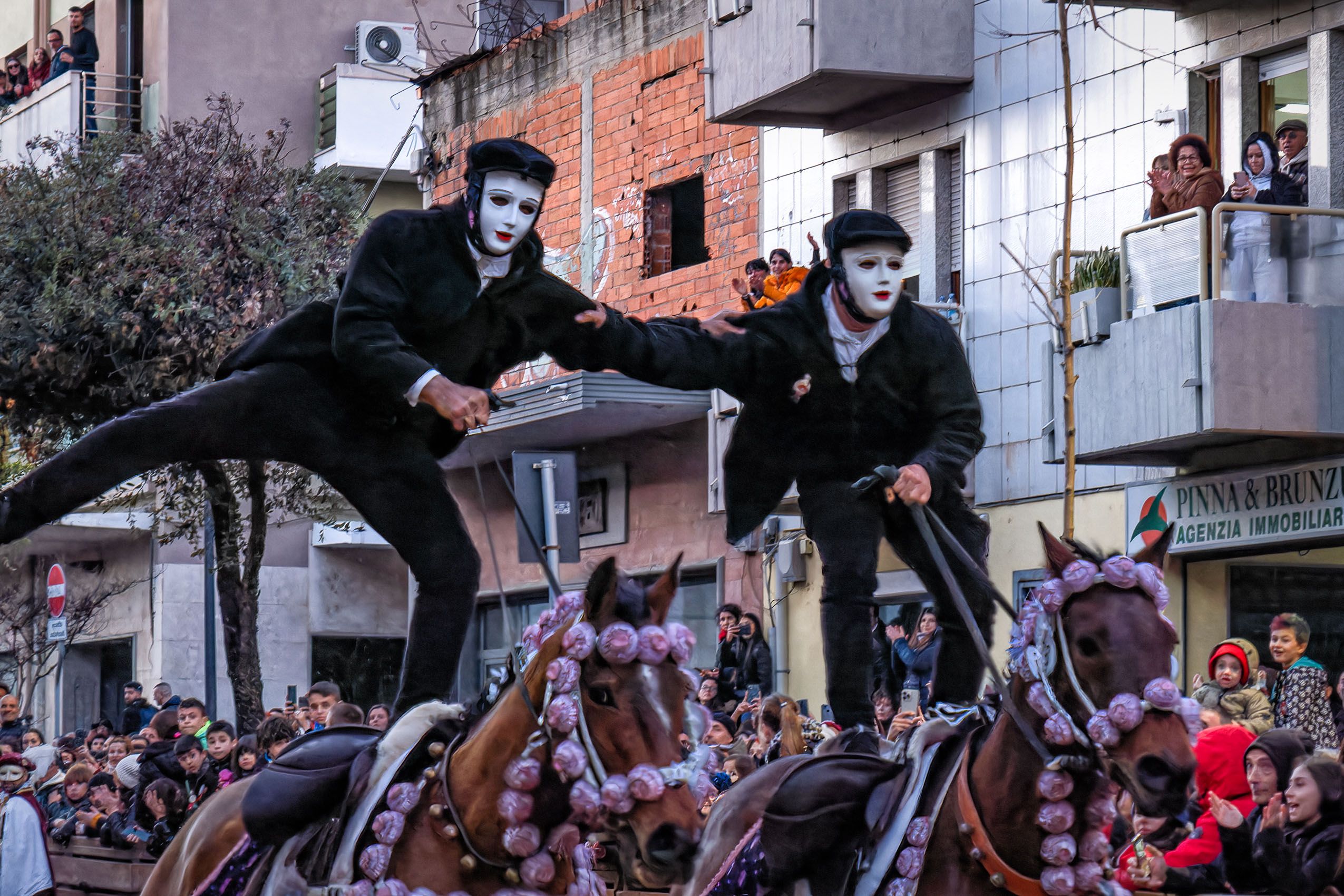SARDINIA: Equestrian Festivals in Oristano
This portfolio focuses on two equestrian festivals that take place in the Sardinian province of Oristano during the carnival season: Sa Carrela ‘e nanti in the village of Santu Lussurgiu and Sa Sartigilia in the city of Oristano itself. Sardinia has a centuries long reputation for horse breeding; large numbers of horse herds remain there today, and equestrian skills continue to be widely cultivated and admired. Carnival season in Santu Lussurgiu is focussed on two events: a weekend devoted to communal choral singing, dancing and drinking; and another weekend of horse racing in the streets. "Sa Carrela 'e Nanti" translates from Sardo as "the street ahead" or "the road in front." The phrase encapsulates the essence of the event: Riders, most dressed either in traditional Sardinian garb or carnival outfits, race in pairs multiple times through the narrow streets of the village. The route is treacherous, with tight turns, steep inclines, and cobblestone paths that test both the rider's skill and the horse’s agility. The closeness of the spectators, who line the streets just inches from the galloping horses, adds to the intensity and danger of the event. The pairing of the riders emphasizes not competition but comradeship—there are frequent gestures of mutual support and affection between the riders as their fellow citizens cheer them on. The participants race for honor, local pride, and the admiration of their peers. This lends the event an energy that reflects the spontaneity of Carnival itself. The ostensible objective for the riders is to knock down one of the chicken figurines suspended above the street at a particular spot. Some of the riders are clearly focused on this goal; others seem indifferent to it and are focused on the ride. It seems clear that at some point in the past, the chickens were real ones, thus linking the event more closely to the current of violence and blood sacrifice underlying the spirit of Carnival.
In contrast to the more raw carnivals of Barbagia, the carnival of Oristano, known as “Sa Sartiglia," is a spectacle of medieval pageantry and equestrian skill. Nevertheless, it shares the theme of renewal and the hope for prosperity that links it to the island’s broader carnival traditions. Held on the last Sunday and Tuesday of the carnival season, Sa Sartiglia centers on a jousting tournament steeped in the traditions of the medieval knightly orders. Its origins are traced back to the 14th-15th centuries, and to the tournaments introduced during the Aragonese domination of the island. The term "Sartiglia" likely derives from the Spanish word *sortija*, meaning ring or joust, which refers to the central event of the festival, the "Corsa alla Stella" (race to the star), in which masked riders (now including women as well as men) attempt to to skewer a small star-shaped ring, suspended by a ribbon, using a sword or long lance while riding at a gallop. Each successful strike is not only considered a display of personal skill but a positive omen for the prosperity of the whole community in the coming year. The event is followed by the “corsa alla pariglia,” a thrilling display of acrobatic feats on horseback, where teams of riders perform daring stunts, showcasing their mastery of the equestrian arts.
The most important ritual event is the dressing of the figure who presides over Sa Sartiglia—Su Componidori. His clothing mixes traditional men’s and women’s items and styles from various periods and cultures that have controlled the area: a 17th century linen shirt, a leather jacket with a short skirt, three sewn women’s headscarves and an embroidered women’s veil, a 19th century top hat, etc. The Componidori, his assistants, and all the equestrians wear pale, expressionless and androgynous face masks. As a king of carnival and harbinger of spring renewal, he carries as a sceptre “sa pippia de maju” (“the little May girl”), a double bunch of violets and periwinkles, with which he blesses the crowd. For the duration of the events, he remains a semi-divine figure.
Today, Sa Sartiglia is an increasingly famous annual festival that attracts international tourists and significant government and commercial sponsorship. It is a spectacular commercial entertainment that at the same time maintains a deeply symbolic ritual value for the community of Oristano, connecting the past with the present and embodying the social, religious, artisanal and agricultural values of the region. The festival is organized by two ancient guilds, of farmers and carpenters, which still play a central role in the life of the community today.

